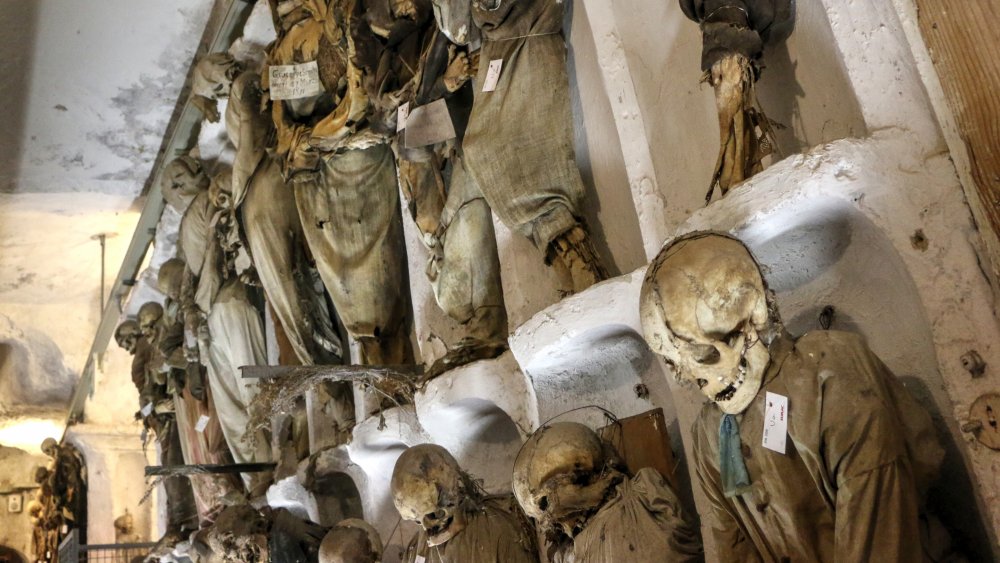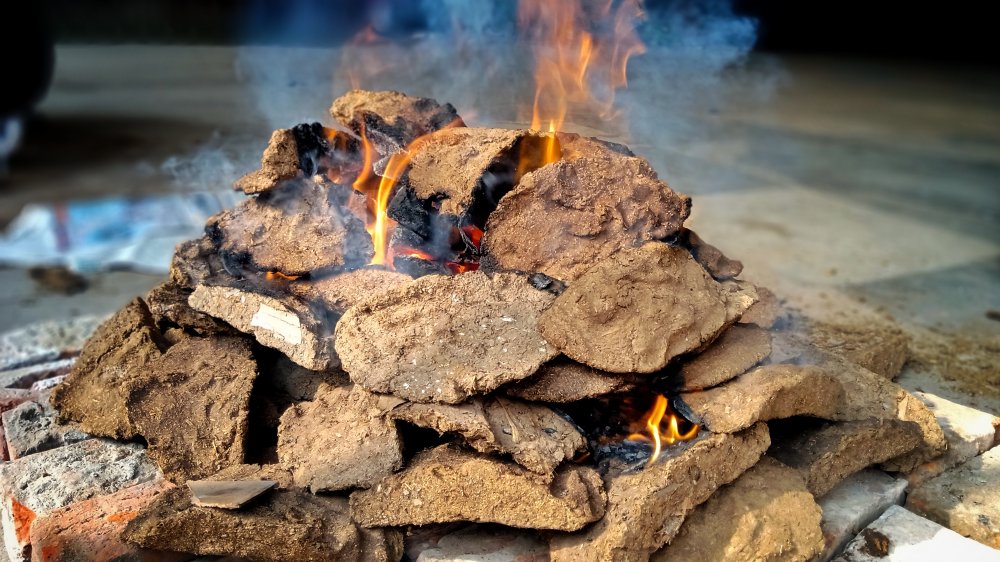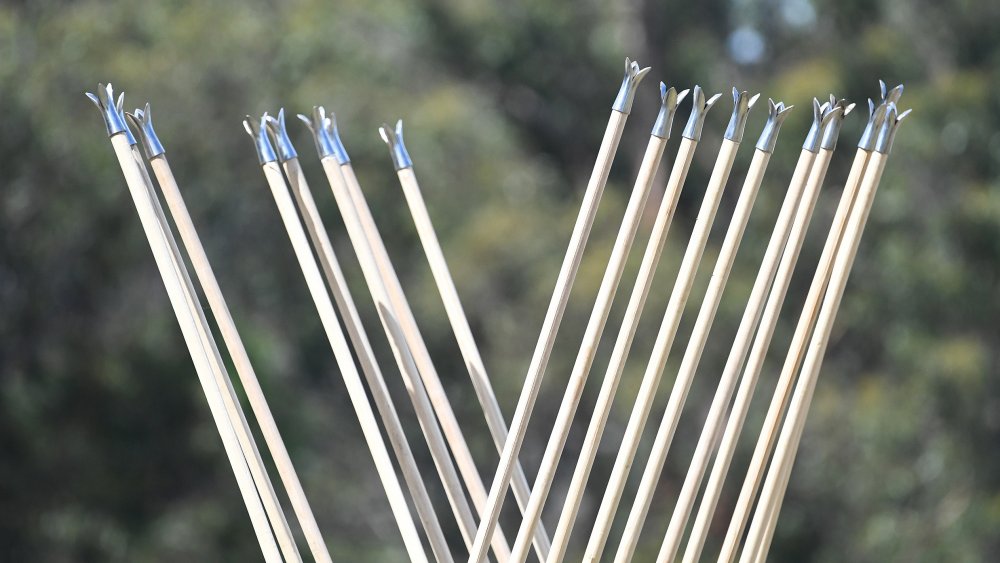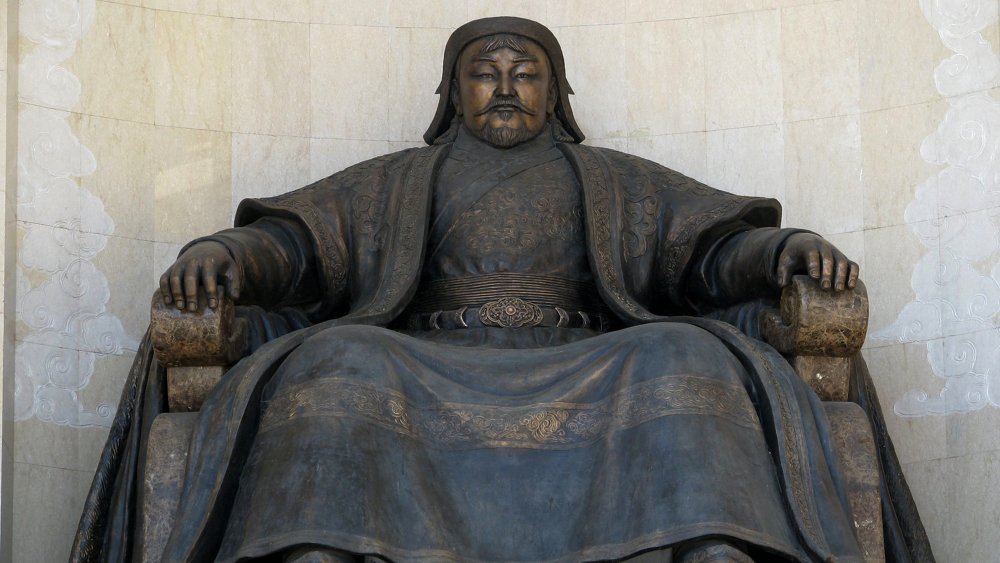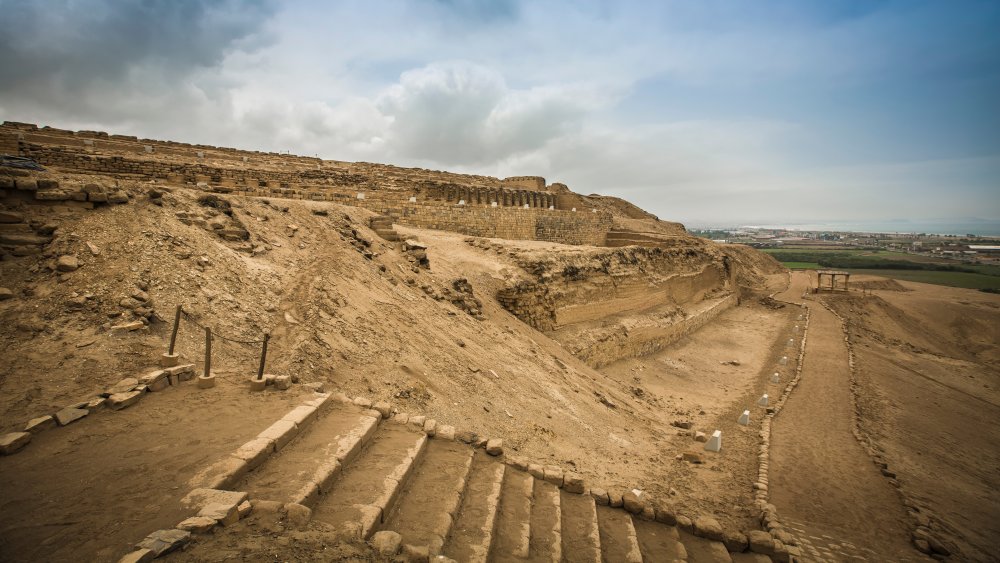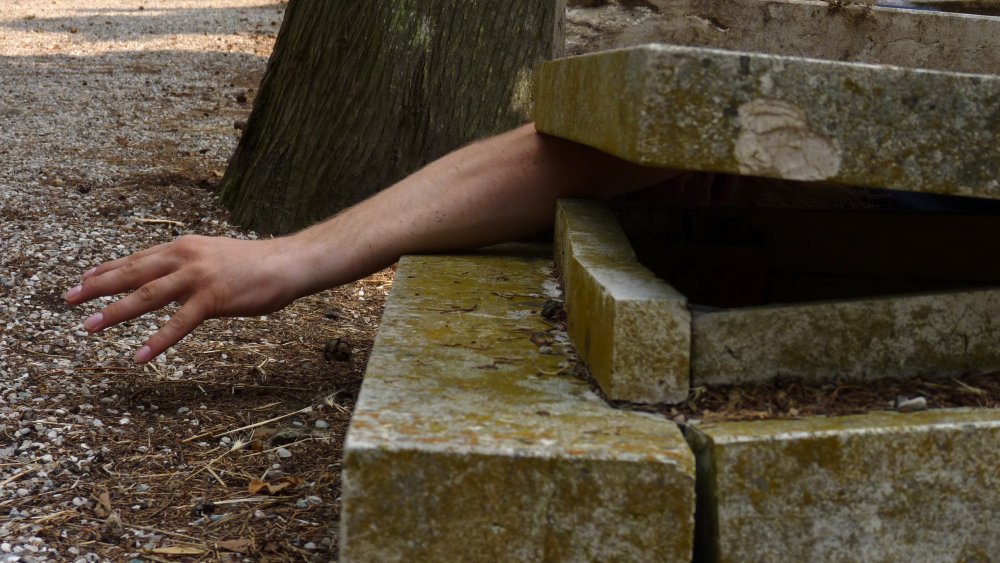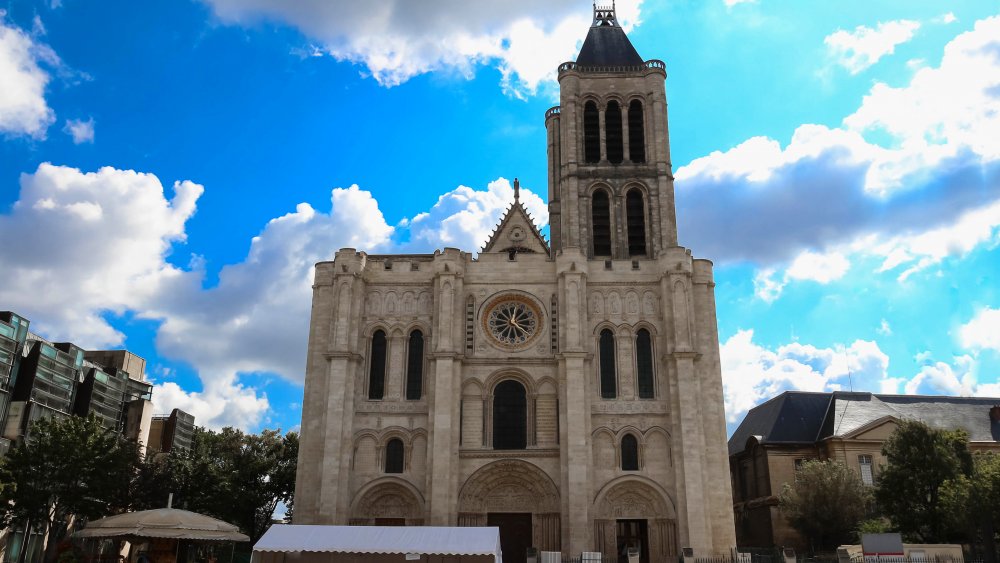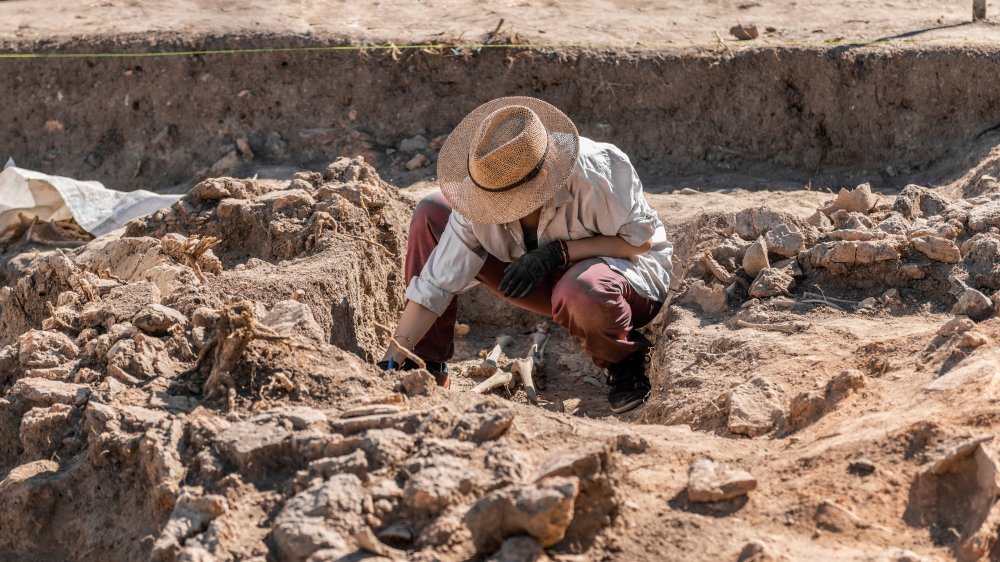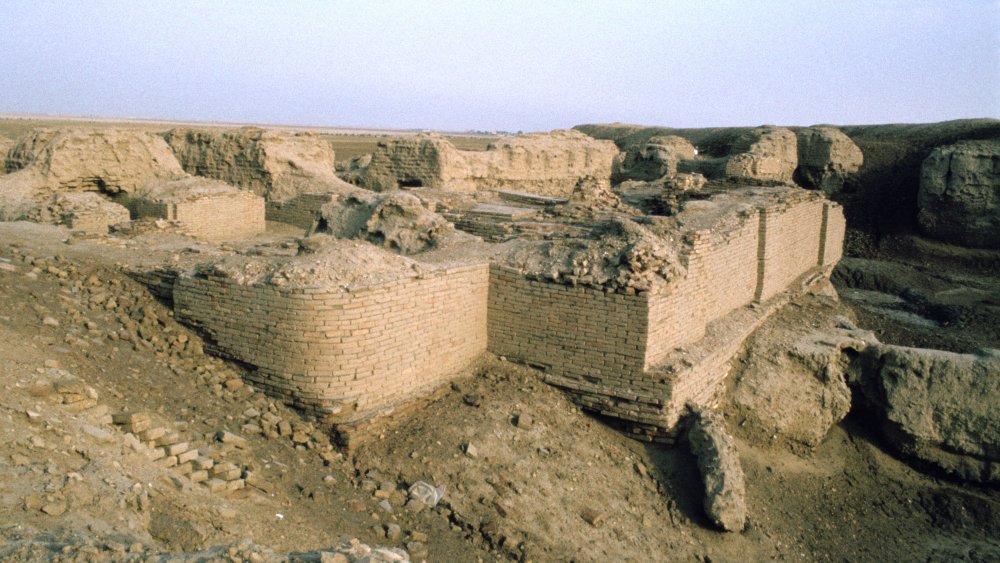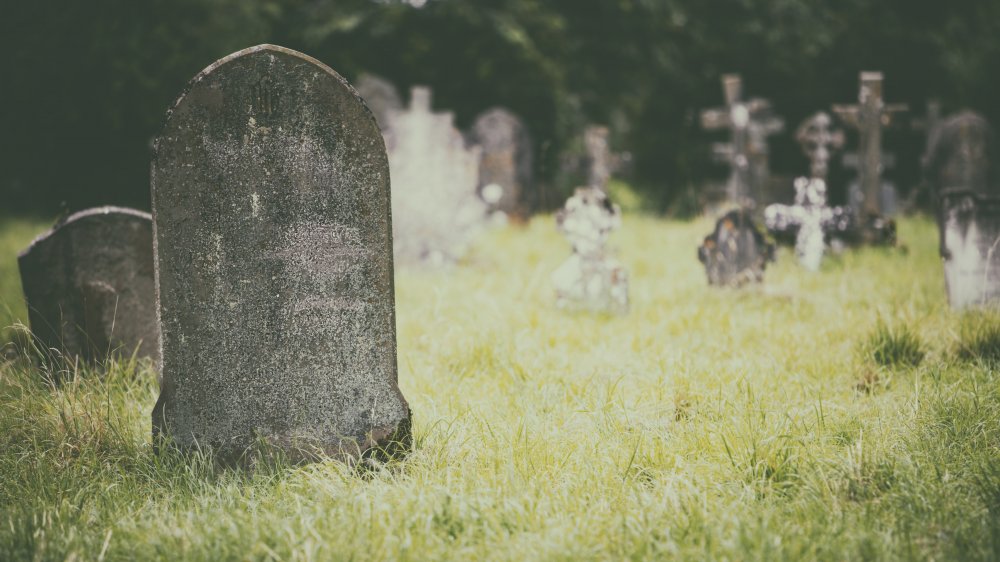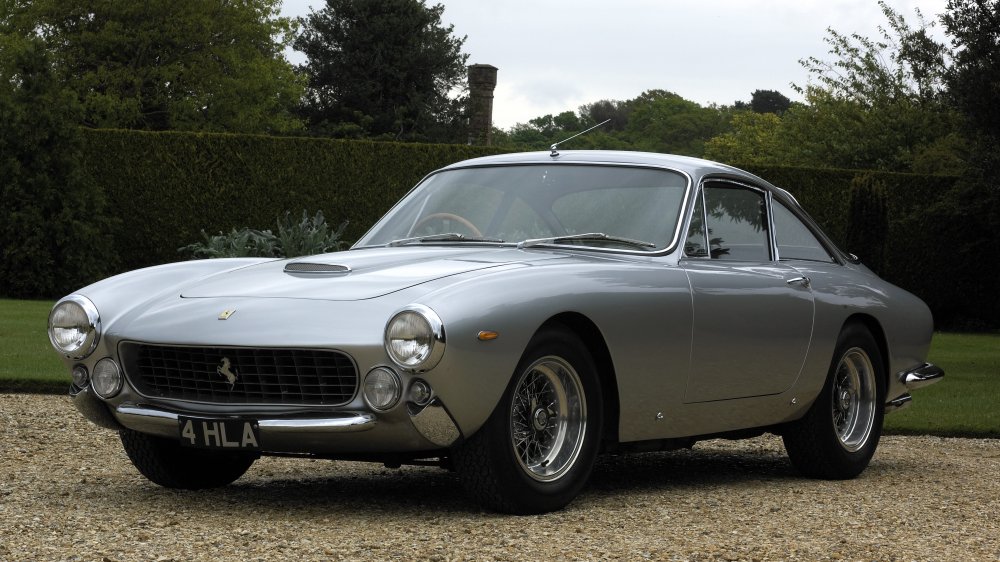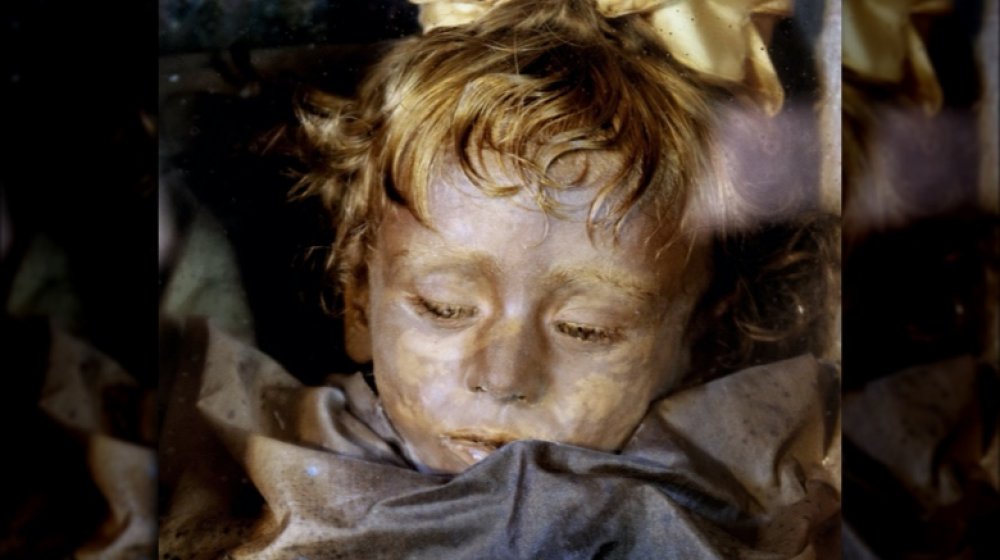History's Most Bizarre Burials
Every country, religion, and cultural group has a different idea about the best way to send off their dead. Burial practices can even vary regionally, and they've changed an awful lot over time, too. In Ancient Egypt, mummification was the gold standard. If you were upper class, the only way you could hope to achieve eternal life was if your body was perfectly preserved for its passage into the other world. For everyone else, well, you could get a budget mummification and just hope for the best.
Today, almost no one mummifies their loved ones ... almost. And we don't tend to bury wealthy people with all of their money anymore, either. But traditions still vary depending on where you are in the world, and some modern individuals have pretty quirky ideas about how they'd like to spend eternity. From vampire graves to Ferraris, here are some of history's most bizarre burials.
Eternal rest in a box full of incinerated excrement
Contrary to like a million different Hollywood jokes, leprosy doesn't actually make your arms and legs fall off. Or any other parts of your body you'd really rather not have fall off. It does cause skin lesions, though, and up until the recent past, it wasn't easily treatable. According to Live Science, we can cure leprosy today, but in the past they really didn't know what to do with people who had leprosy, who were scary not just because of the way they looked but also because they were contagious. And evidently, the fear of this disease also transcended death, in a way.
The earliest known victim of leprosy died around 2000 BC in Rajasthan, India. This particular person lived in an area populated by Vedics, who didn't typically bury people (they preferred cremation) except under specific circumstances, which included being younger than the age of five, pregnant, the victim of a magical curse, or a leper. This person's body was buried in a large stone box, and the coffin was filled with the ashes of incinerated cow poop. To us modern people this sounds kind of like a dis, but it wasn't. The Vedics believed that burned cow dung was sacred and purifying. So far from being disrespectful, this particular burial seems to have been designed to benefit not just the deceased but those who might have contact with the body down the road.
This warrior's body was desecrated ... or maybe just made more awesome
Modern Westerners like to bury our dead neatly, dressed in something presentable, and looking more or less comfortable and peaceful. This idealism wasn't shared by the Arras culture, who were Iron Age people living in the Yorkshire region of what is now modern England.
Gizmodo reports that in 2016, archaeologists discovered a 2,500-year-old skeleton at the Pocklington burial site. In life, this person had been a warrior, and he wasn't very old either, maybe late teens or early 20s. He was buried respectfully with his sword by his side, but he also had five spears driven through his dead body prior to burial — four through his spine and the other one in his groin (um, yikes). The reason for this isn't completely clear, but after he was covered with dirt the effect was pretty dramatic. The spear shafts were long enough that they would have stuck out from the mound of earth covering his body, where they would have remained for a long time. So yeah, mourners did kind of desecrate the poor dude's body, but you gotta admit, his grave looked badass.
Genghis Khan's funeral procession murdered everyone it encountered
Genghis Khan terrorized Mongolia for more than 20 years, and when he died he was pretty rich. And like many wealthy leaders of his time, Genghis wanted to be buried with all of his stuff. The problem when you are a wealthy monarch, though, is it that once people know or suspect you've been buried with all of your stuff, you're in great danger of being unearthed.
So Genghis Khan's place of burial was kept secret. How is this possible? Well, the people responsible for his burial made very sure that no bystanders could reveal the location of his tomb. According to the BBC, Genghis was carried to his tomb by an army, which dutifully killed anyone it encountered on the road. And after he was buried, the soldiers trampled his grave site under the hooves of 1,000 horses, which effectively destroyed all the evidence. Some legends even say the soldiers killed the slaves who dug the grave, so they would never reveal the secret.
It seems to have worked. In the 800 years since, expeditions specifically looking for the infamous emperor have consistently failed to find diddly. Although, it's not as if they had a lot of support from the Mongol people — locally, it's considered taboo to look for Genghis Khan's grave. Not because of some stupid legendary curse or something, but because Genghis asked to be buried in secret, so locals think his grave should remain secret.
This tomb was surrounded by dead human infants
The Incas somehow managed to build a huge civilization in a pretty hostile place. Life was uncertain for them, so they chose some pretty awful coping mechanisms, including human sacrifice. What's especially horrible to contemplate is that the Incas didn't exclude the younger or even the very young from the list of individuals that could be included in a sacrificial event.
According to National Geographic, human sacrifice can't be ruled out as the reason why so many human babies are buried at the massive gravesite recently unearthed near Lima, Peru. The Pachacamac site contains 80 bodies, most of which were buried in a "flexed" position. The people in the tomb seem to have been important — many of them were wearing jewelry and painted wooden masks, and they were surrounded by grave goods, which included everything from pots to companions like dogs and guinea pigs. But what makes this burial site particularly horrible is that around the perimeter there is a ring of newborn babies, buried with their heads pointed towards the rest of the bodies. It may not be as bad as it sounds, though. Although human sacrifice can't be excluded, it's also possible that the babies died of natural causes, and that their bodies were saved for future burial.
Just in case ...
Today, vampires seem kind of cool and occasionally glittery, but in the ancient past, the idea that a corpse might be able to reanimate and eat the living wasn't just fiction, it was a very real fear that people had during a time when humans didn't have a whole lot of control over things like illness and death.
According to History, some of these fears may have stemmed from early people's inability to comprehend the physical processes of decomposition. Decomposing bodies tend to bloat — we know today that this happens because of a build-up of gases, but in those days it just looked like the corpse was getting fatter. And to add to the horror, sometimes those gasses force blood into the mouth, which kind of does make it look like maybe Bob's body is getting fat because he's been feasting on the blood of the living.
Fear that a corpse might reanimate was pretty widespread, and as a result we have a number of "vampire burials" in the archaeological record. These types of burials were usually reserved for people who were believed to be vampires, or at least at risk of becoming vampires after death. The people who buried these individuals made sure to take precautions, like placing sickles around their necks. That way you didn't need to desecrate the body by actually decapitating it, because the decapitation would only happen when and if the person decided to rise from the dead.
Some bones and a random mummified lung
This particular burial seemed super weird when archaeologists first discovered it in 1959, but today we think that the strange state of this tomb's contents is more a result of circumstances than intention. The bones belonged to Queen Arnegunde, a sixth century Merovingian monarch who lived in what is now France. When her tomb was opened, archaeologists found her skeleton, a strand of hair, some jewelry, and a few bits of cloth and leather. But the weirdest thing discovered in the tomb was a mummified lung. Not an entire mummy, and not two mummified lungs, just the one lung.
According to Ancient Origins, Queen Arnegunde was buried in a copper alloy belt, which may have had something to do with the weird preservation of her lung. Researchers scanned biopsies up the mummified lung with an electron microscope and discovered high concentrations of copper ion and copper oxide. They also found benzoic acid and other compounds that are also found in the balms used by the ancient Egyptians to mummify bodies. So it's possible that the people who buried the queen may have given her a postmortem soup of spices and other compounds, probably through the mouth, and the fluid may have ended up in that one lung. Copper has preservative properties, so as the copper belt broke down, it probably contributed to the lung's preservation.
A circle of death that might have represented the circle of life
Circles and spirals seem to have had particular significance to the indigenous people of Central and South America. According to Ancient America, the spiral was often used to represent water, possibly because of its association with shelled sea creatures. It's not super clear, though, why 10 skeletons found at a burial site in the Mexican city of Tlalpan were arranged in a spiral formation with their body parts interlocked.
The grave contained the bodies of at least two women, one man, one child, and an infant. And their arrangement almost suggests intimacy — one body was buried with its head resting on the chest of another, one had its hands under the back of another, and the baby was positioned on top of one of the bodies. The general orientation was in a spiral, as if the group was moving around the center of a wheel. So far, this is the only gravesite known with this particular arrangement of bodies.
The question remains, though, what such a burial might mean. In this part of the world you can't ever rule out a deliberate killing, but the people could have also been victims of a massive disaster or other deadly event. The arrangement of the bodies and the fact that they come from different age groups makes researchers believe that the burial may have been ritualistic, possibly some kind of representation of the circle of life.
The Great Death Pit of Ur was about as awful as it sounds
"The Great Death Pit" is a burial site in the ancient Mesopotamian city-state of Ur. According to Ancient Origins, there were 74 bodies in the grave, most of which were dressed in expensive garments and laid out in tidy rows. Historians think the people buried in the pit were sacrificial and were probably meant to accompany someone more important into the afterlife.
What's particularly curious about the burial is that all its occupants are women, with the exception of six men who were armed and appear to be guarding the entrance. At first, archaeologists thought the occupants of the Great Death Pit were meant as the postmortem servants for someone buried nearby, possibly in a grave that was destroyed or looted before the arrival of modern archaeologists. Later scholars, though, think the person of honor was buried in the Great Death Pit itself, and it had just been too easy to lump her in with the rest of her nicely-dressed companions. One of the women had a headdress and jewelry that was similar to the headdress and jewelry found on other royal skeletons, so it seems likely that she was the reason why the other 73 people had to die.
Only a few of the bodies show injuries, so the current thinking is that the women and soldiers may have taken poison, and the ones the poison hadn't killed were probably finished off before burial.
Timothy Clark Smith's grave has a window
Unsurprisingly, bizarre burials didn't just happen in the ancient world. Modern people can be pretty quirky, too, even about things that happen after they're dead and buried. In Timothy Clark Smith's time, there was an epidemic of taphephobia, which is the totally rational (at the time at least) fear of being buried alive. It was kind of hard to know for sure that a body had truly shuffled off this mortal coil, and there were some stories — horrible, horrible stories — about coffins of exhumed bodies with scratch marks in them, as if the dead person had woken up and tried in vain to escape.
Smith, though, wasn't satisfied with just one of the usual precautions like installing a bell above his gravesite that he could ring from inside his coffin. His whole tomb was a precaution — he had the bell, but he also had a breathing tube and a staircase, you know, in case he felt able to walk out of his grave after waking up. The most notable precaution was the installation of a window, which was placed six feet above his face so visitors could look down and confirm that he was, in fact, dead.
According to Atlas Obscura, Smith still lies in the same grave, so evidently his fears didn't amount to anything, which is kind of unfortunate in retrospect. And over the years, the window fogged up, so he's finally got some privacy, too.
I'm driving my Ferrari to the Pearly Gates
Ordinary people worry about what our funerals might cost our families. Burial plots aren't cheap, and coffins aren't cheap, either. Add to that the cost of the service itself, and it sometimes seems like an old fashioned funeral pyre wouldn't be such a terrible idea.
When you're rich, though, well, you can get buried in any weird way you want, because money might not be able to buy happiness but it sure can buy you a pretty big hole in the ground. Socialite Sandra West made absolutely sure that her afterlife wishes would be carried out when she made up her last will and testament. Amongst her demands: She wanted to be buried in her 1964 powder-blue Ferrari 330 America "with the seat slanted comfortably."
According to My San Antonio, when West died of a prescription drug overdose in 1977, she was living in Beverly Hills and was worth about $5 million, which is practically impoverished by today's standards of wealth and influence. West and her car, which was worth about $20,000, were placed in a concrete box and buried in the Alamo Masonic Cemetery in San Antonio.
Rosalia Lombardo's body is on display in the Palermo Catacombs
The death of a loved one is always terrible, but there's something especially awful about losing a child. Parents cope with that kind of grief in a lot of different ways, and it's not up to us to judge them for it. For one grieving father, though, coping meant going way outside the bounds of what most people would consider.
Rosalia Lombardo was a beautiful child who was only 2-years-old when she died. According to the official website of the Palermo Catacombs, Rosalia's father was so distraught at her death that he asked a local taxidermist named Alfredo Salafia to make her "live forever." Salafia accepted the challenge, and Rosalia's prepared body was placed into a glass coffin in the Palermo Catacombs, which today is a sort of macabre tourist attraction in Italy. (People started putting bodies in the catacombs back in 1599 — the original occupant was a friar named Silvestro da Gubbio, who still watches visitors from his place on the wall.)
Salafia was so successful that years after her death, Rosalia appears to be merely sleeping. Years later, she looks a little less perfect than she did in 1920, and the fact that she's surrounded by thousands of much less-well preserved corpses kind of spoils the effect anyway. Still, she's generally regarded as the world's most "beautiful" or at least most well-preserved mummy. Today, her coffin is filled with nitrogen to keep decomposition at bay.
The Dotson's gravesite can be seen from the air
Richard and Catherine Dotson never intended to have a bizarre burial or become a daily spectacle regularly observed by hundreds of people. It's something that just sort of happened years after they were buried.
In the 1980s, the Savannah Airport in Georgia decided they needed another runway. The future location of Runway 10, though, was inconveniently planned to cross a cemetery plot on a small family farm. Airport officials managed to obtain the land, but the family of the couple who were buried there did not consent to have their relatives moved. According to Atlas Obscura, officials didn't let the refusal deter them from building the runway — they just paved over the graves. They were at least sort of respectful about it, though. When workers laid down the runway, they added two flat headstones, so at least the Dotsons wouldn't lie in unmarked, forgotten graves.
The flip side of this, though, is that the two graves are very visible to everyone who happens to be on board a plane that passes over that particular part of the runway. Some people even say they've seen the ghosts of Mr. and Mrs. Dotson, which isn't really surprising when you consider just how many people are annoyed every day by the presence of a flight path over their once-peaceful homes. Maybe the Dotson's family didn't do them any real favors by insisting that their eternal resting place remain undisturbed — physically undisturbed, anyway.
